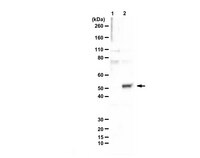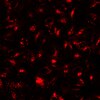ABE2865-100UG Sigma-AldrichAnti-Meis1/2
Anti-Meis1/2 Antibody, Cat. No. ABE2865, is a highly specific rabbit polyclonal antibody that targets Meis1/2 and has been tested in Chromatin Immunoprecipitation (ChIP), Immunofluorescence, and Western Blotting.
More>> Anti-Meis1/2 Antibody, Cat. No. ABE2865, is a highly specific rabbit polyclonal antibody that targets Meis1/2 and has been tested in Chromatin Immunoprecipitation (ChIP), Immunofluorescence, and Western Blotting. Less<<Recommended Products
Overview
| Replacement Information |
|---|
Key Spec Table
| Species Reactivity | Key Applications | Host | Format | Antibody Type |
|---|---|---|---|---|
| M | ChIP, IF, WB | Rb | Purified | Polyclonal Antibody |
| References |
|---|
| Product Information | |
|---|---|
| Format | Purified |
| Presentation | Purified rabbit polyclonal antibody in PBS with 0.05% sodium azide and 50% glycerol. |
| Physicochemical Information |
|---|
| Dimensions |
|---|
| Materials Information |
|---|
| Toxicological Information |
|---|
| Safety Information according to GHS |
|---|
| Safety Information |
|---|
| Packaging Information | |
|---|---|
| Material Size | 100 μg |
| Transport Information |
|---|
| Supplemental Information |
|---|
| Specifications |
|---|
| Global Trade Item Number | |
|---|---|
| Catalogue Number | GTIN |
| ABE2865-100UG | 04054839551017 |
Documentation
Anti-Meis1/2 Certificates of Analysis
| Title | Lot Number |
|---|---|
| Anti-Meis1/2 Polyclonal Antibody | Q3094723 |














